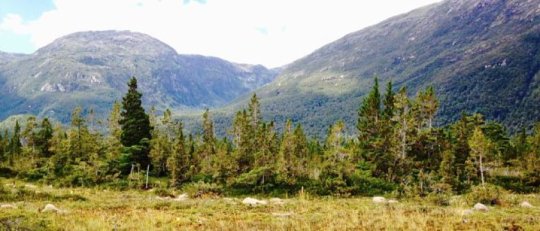[ad_1]
A new Portland State University study shows that not all populations of a single, widely spread tree species respond the same to climate change, something scientists will need to consider when making climate change projections.
The study, published online recently in the Journal of Biogeography, examined growth rings from the world’s southernmost conifer tree species, Pilgerodendron uviferum, to see if its growth rate responded differently to climate change over time and depending on its location in northern, central or southern Patagonia.
The study, led by PSU geography professor Andrés Holz, found that during the first half of the 20th century, the climate-growth relationships were relatively similar between the southern (poleward) and northern (equatorward) range edges, but diverged after the 1950s when warming in southern South America increased.
In the northern and southern edges, where it can be relatively dry during the spring and summer months, wetter-than-average conditions resulted in increased tree growth. However, in central Patagonia, the region that gets the most rain, growth was mostly dependent on drier and sunnier conditions.
But in the 1950s, warmer conditions globally as well as an upward trend in the climate phenomena known as the Antarctic Oscillation, or Southern Annular Mode, shifted storm tracks poleward resulting in a decline in precipitation in northern Patagonia and an increase in precipitation in central and southern Patagonia. As a result, trees in southern Patagonia reversed trend and now their growth is favored by drier, sunnier conditions.
“We found that not only can we see different populations of a widely distributed species respond differently to natural climate variability in a given region, but also over time within each of these regions and because climate variability is amplified by climate change, their tree growth responses to climate can change from a bit to a lot,” said Holz, who also serves as a faculty fellow in PSU’s Institute for Sustainable Solutions.
Holz said the findings suggest that when trying to simulate how different species and ecosystems are going to respond to climate change in the next 10, 50 or 100 years, a single parameter per species, and even per population, cannot be used to represent an entire species’ growth.
“We show that that would not work because they respond differently over time and space,” Holz said.
The study’s other authors are Sarah J. Hart and Thomas T. Veblen from the University of Colorado Boulder; Grant J. Williamson from the University of Tasmania, Australia; and Juan C. Aravena from the Universidad de Magallanes, Chile.
Story Source:
Materials provided by Portland State University. Note: Content may be edited for style and length.
[ad_2]















